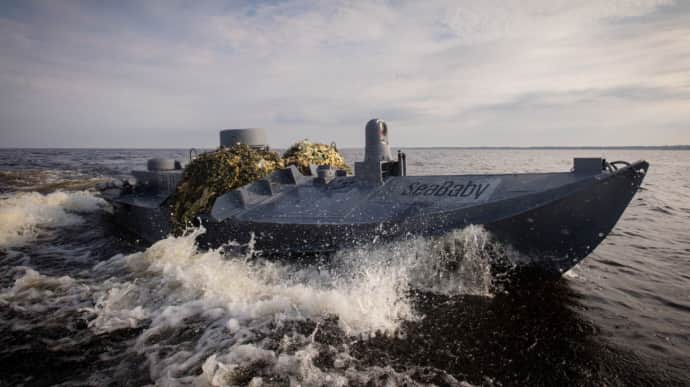Ukraine's Security Service drones plant over 15 underwater mines near Crimea and damage 4 Russian ships, WSJ reports

Sea Baby maritime drones of the Security Service of Ukraine (SSU) planted more than 15 underwater mines near the waters of the Russian-occupied Crimea, as a result of which at least four Russian ships were damaged.
Source: The Wall Street Journal (WSJ)
Details: The WSJ reads that after the initial use of maritime drones, the Russians built larger barriers at the entrance to the port of temporarily occupied Sevastopol, which almost made drone strikes impossible. So, the team of SSU officers came up with an alternative: planting sea mines. The so-called bottom mines are made of plastic and weigh about 400 pounds (180 kg), and they are hard to detect as they are submerged in the silt under shallow waters.
Over the course of a month and a half, the specialised SSU team tracked the routes of naval vessels and civilian transport before deploying a Sea Baby drone to plant two mines.
On 14 September, the Samum, a Russian guided-missile corvette, was hit by one of the mines, which blew a hole in its stern. Reports indicate that the boat is still undergoing repairs in a dry dock.
Brigadier General Ivan "Hunter" Lukashevych told journalists that over the following weeks, Sea Baby drones criss-crossed the area, covering more than 3,000 miles (4,828 kilometres) and planting approximately 15 additional mines. During one of the missions, detected by three patrol boats of the Raptor class, the drone opened fire from a grenade launcher, hitting a Russian vessel.
On 11 October 2023, the Pavel Derzhavin, a patrol vessel of the Russian Black Sea Fleet, breached its hull while entering Sevastopol Bay. It was heading to port for maintenance. Mine clearers and divers combed the area searching for mines, apparently unsuccessfully.
On 13 October, the Pavel Derzhavin was redirected to another port for repairs, but while exiting Sevastopol Bay, it hit a mine. A large tugboat sent to rescue it also hit a mine, requiring it to be towed back to port itself.
Several days later, an explosion also damaged a modern mine countermeasures ship, one of two in service in Russia.
The Wall Street Journal asserts that the remote mining carried out by the SSU's Sea Baby drones is the world's first successful example of remote mining.
Support UP or become our patron!





